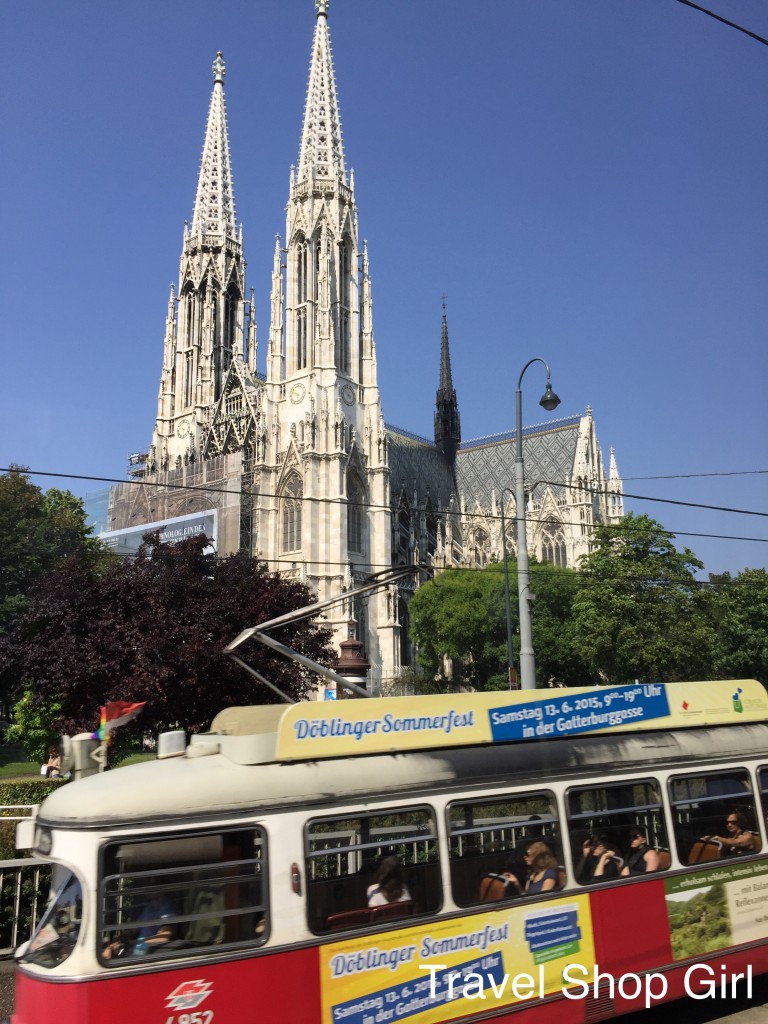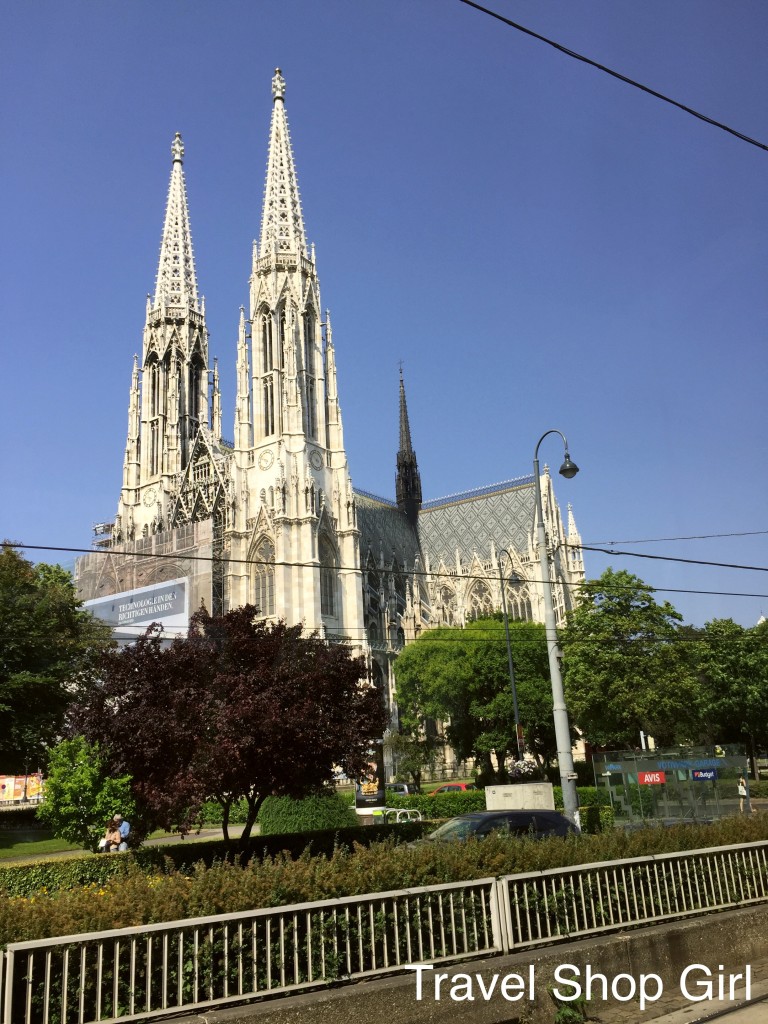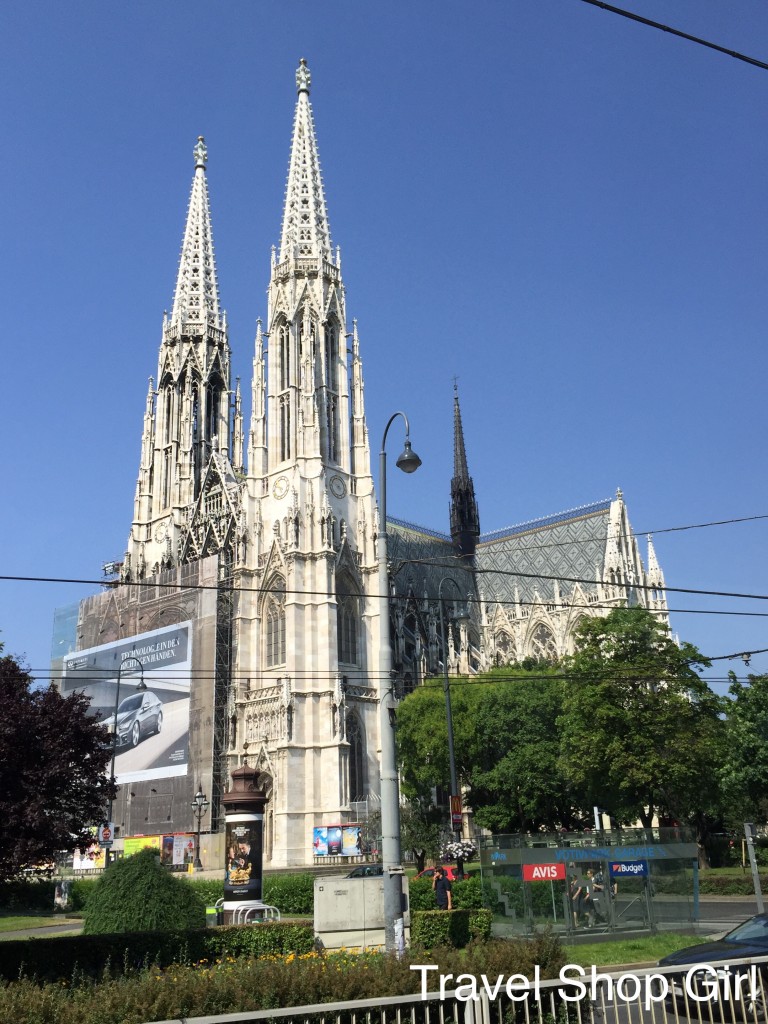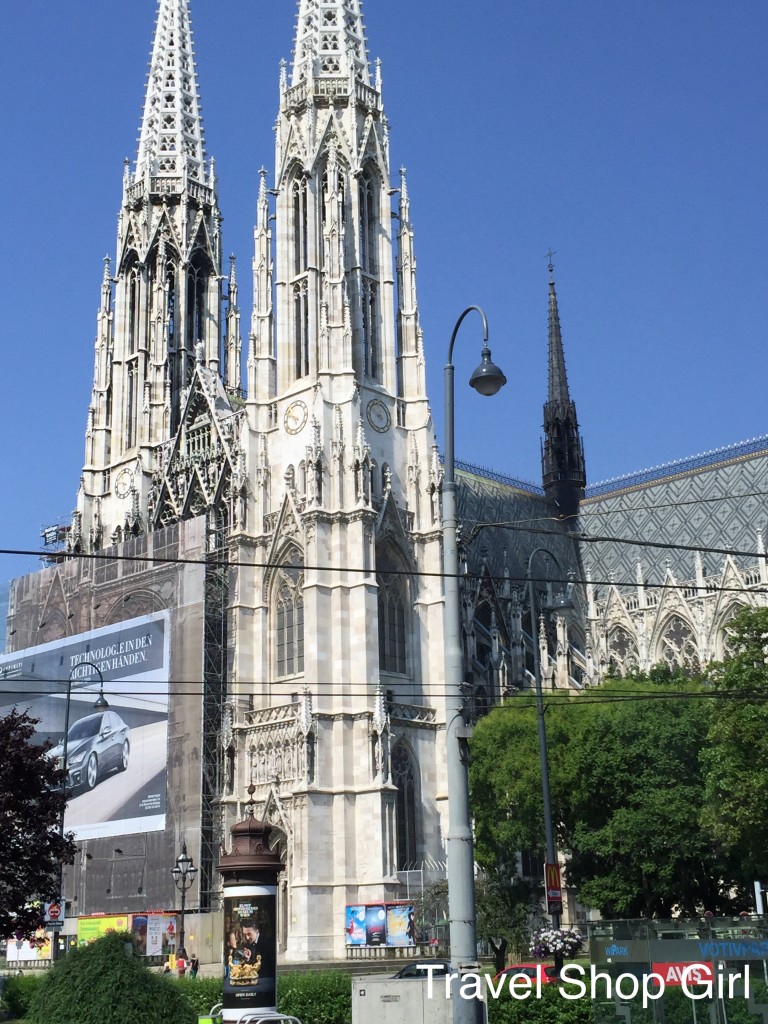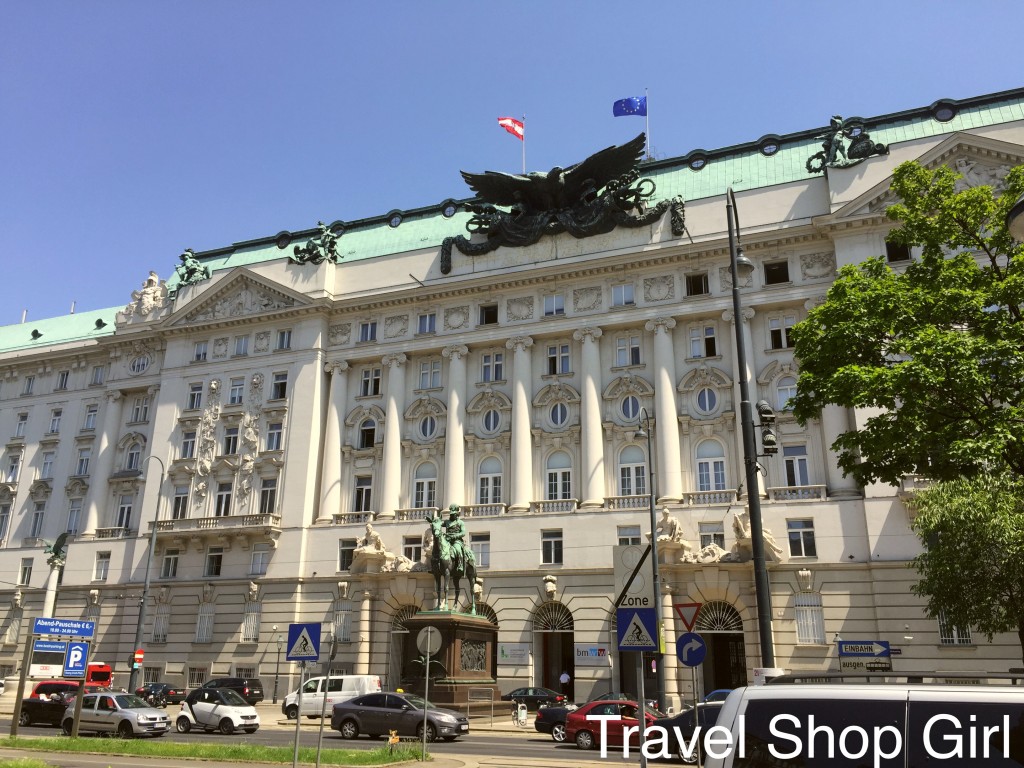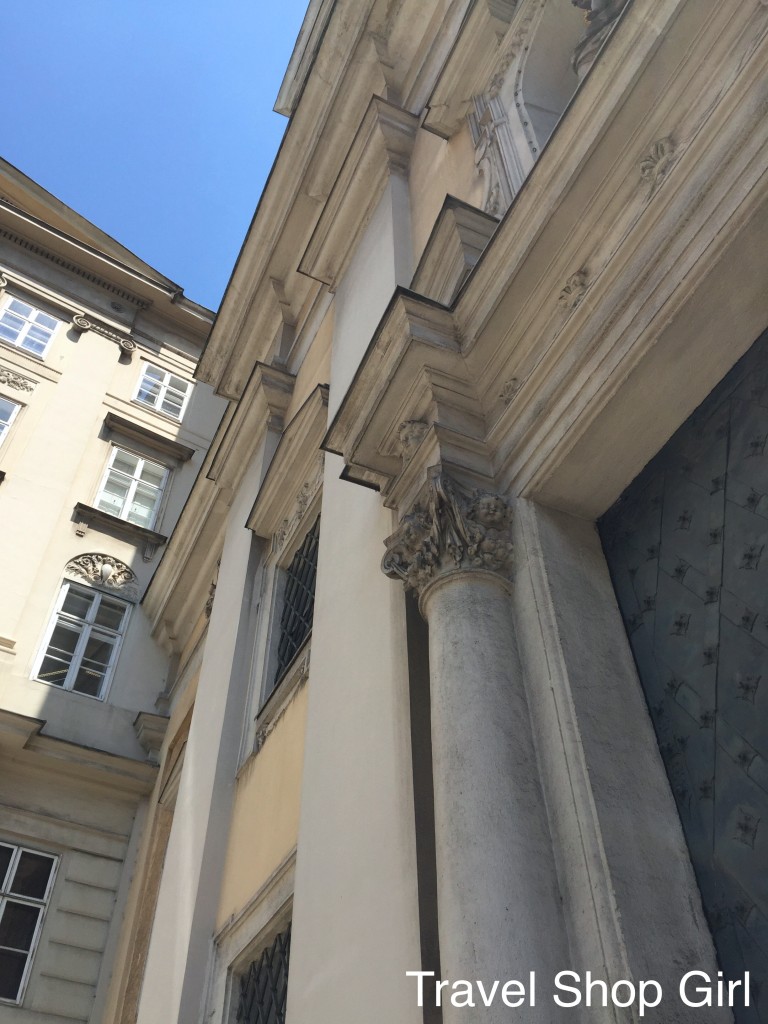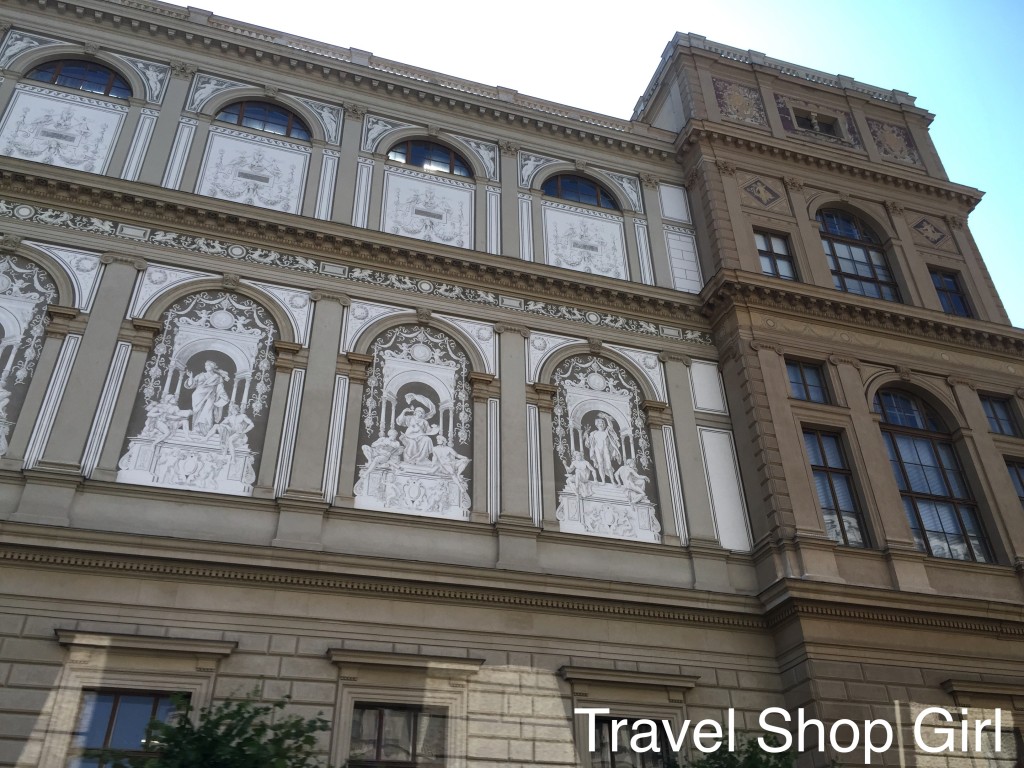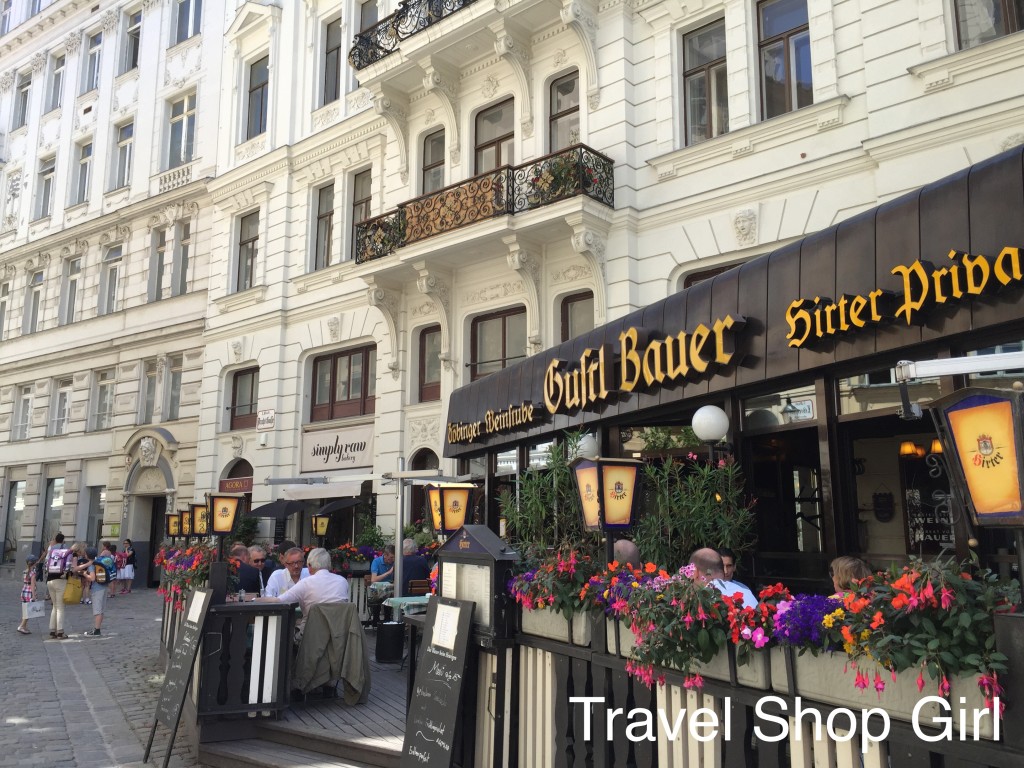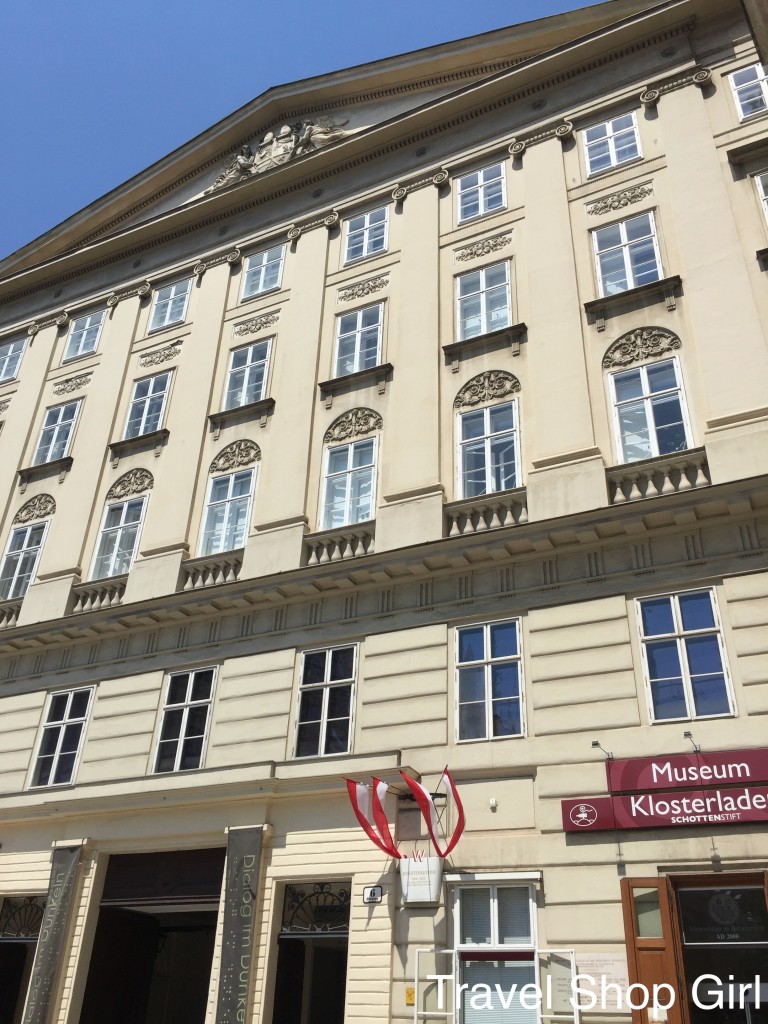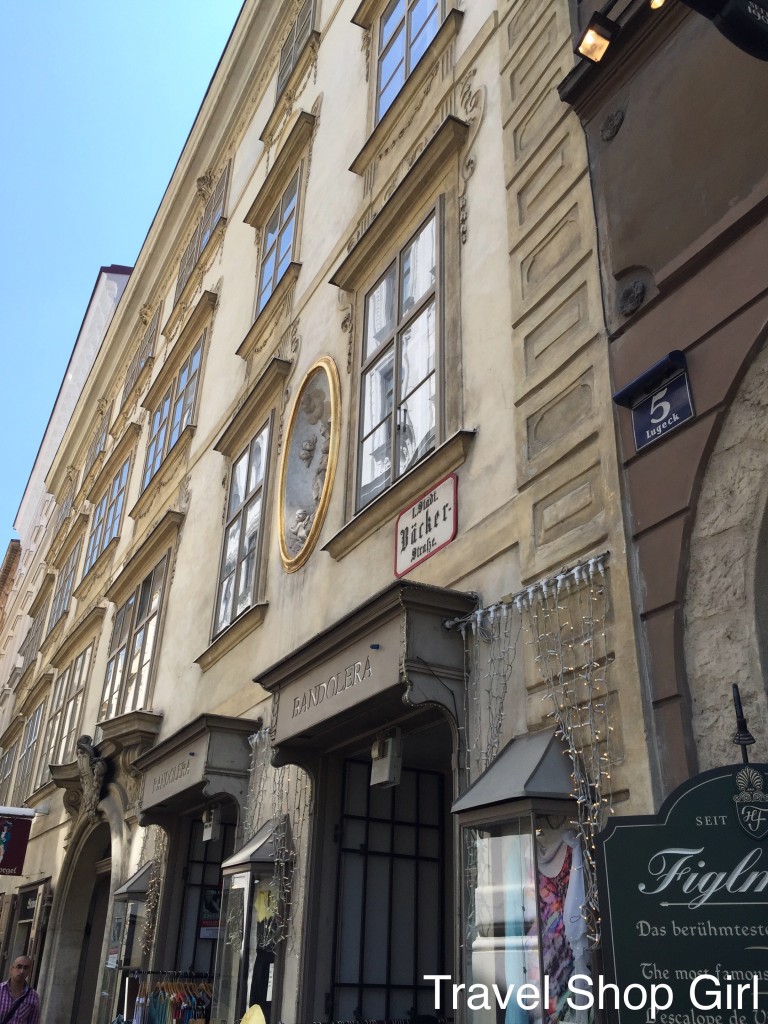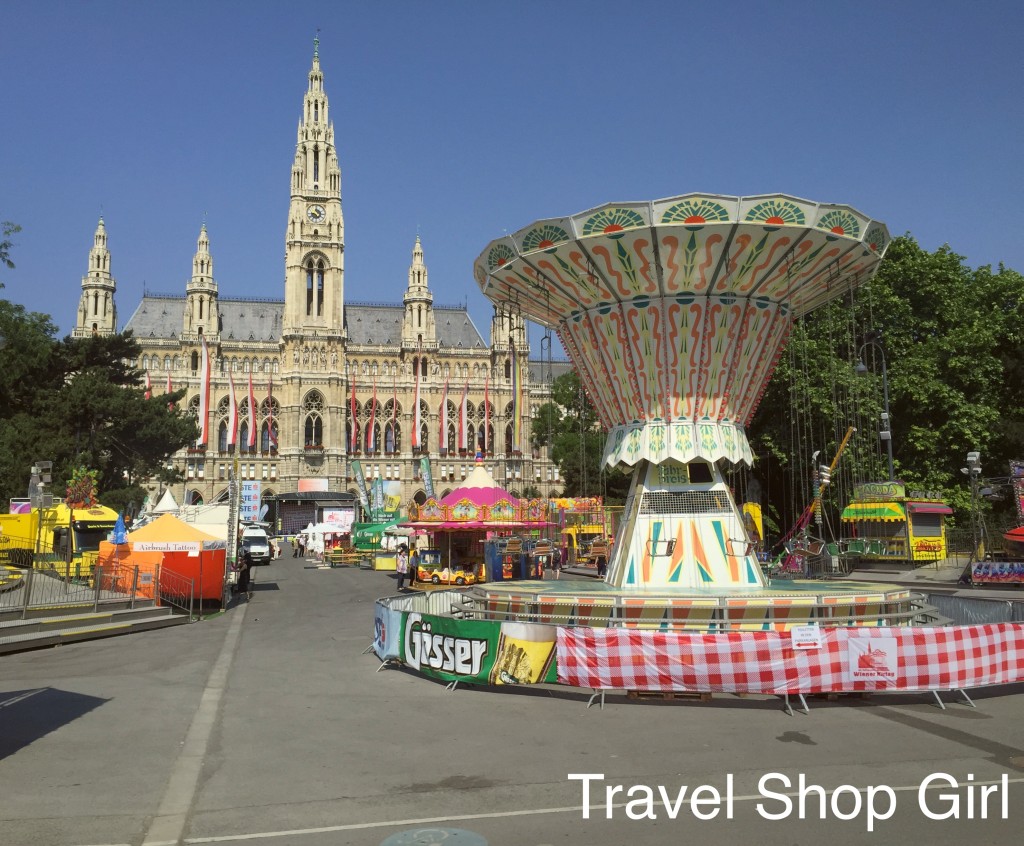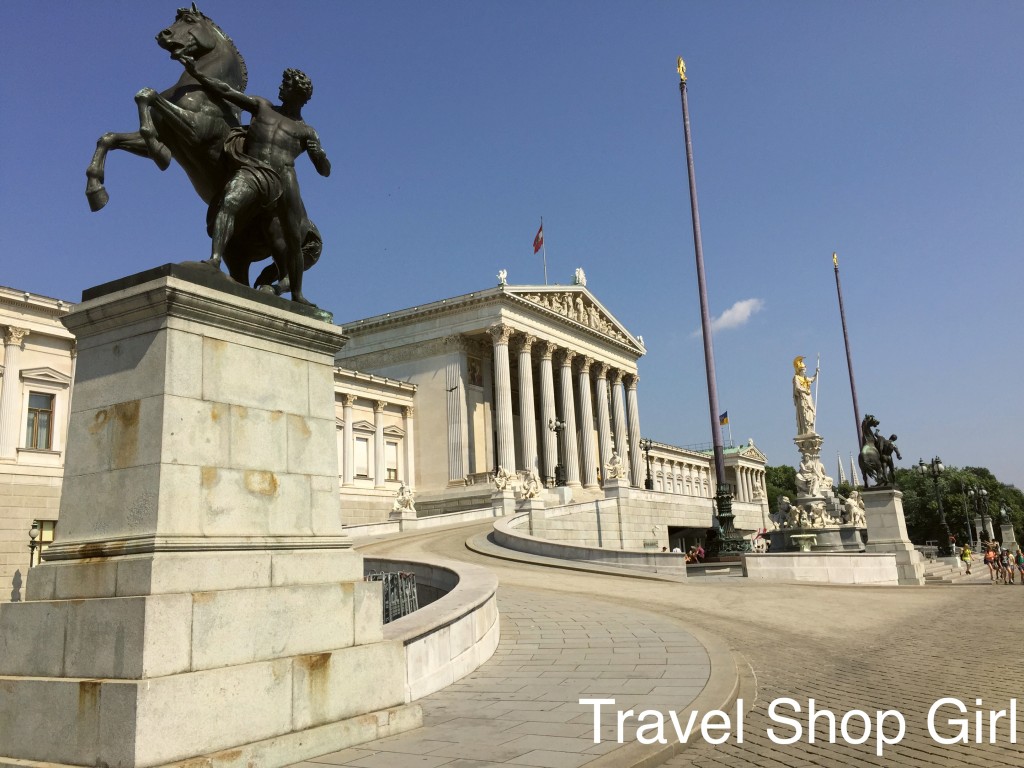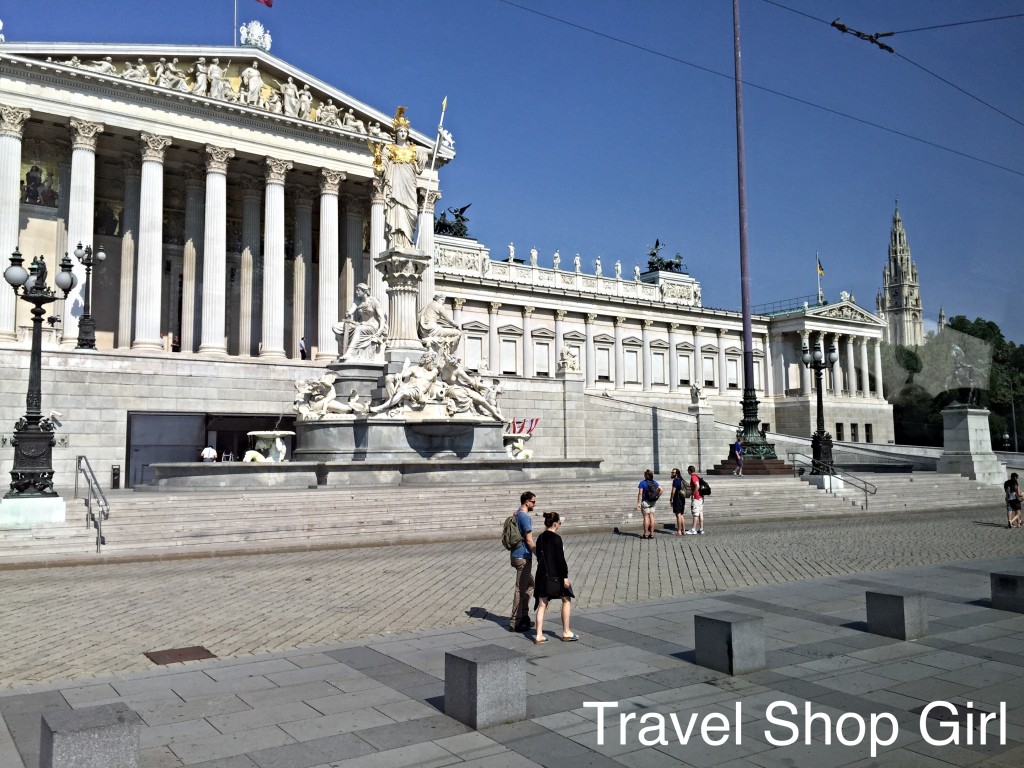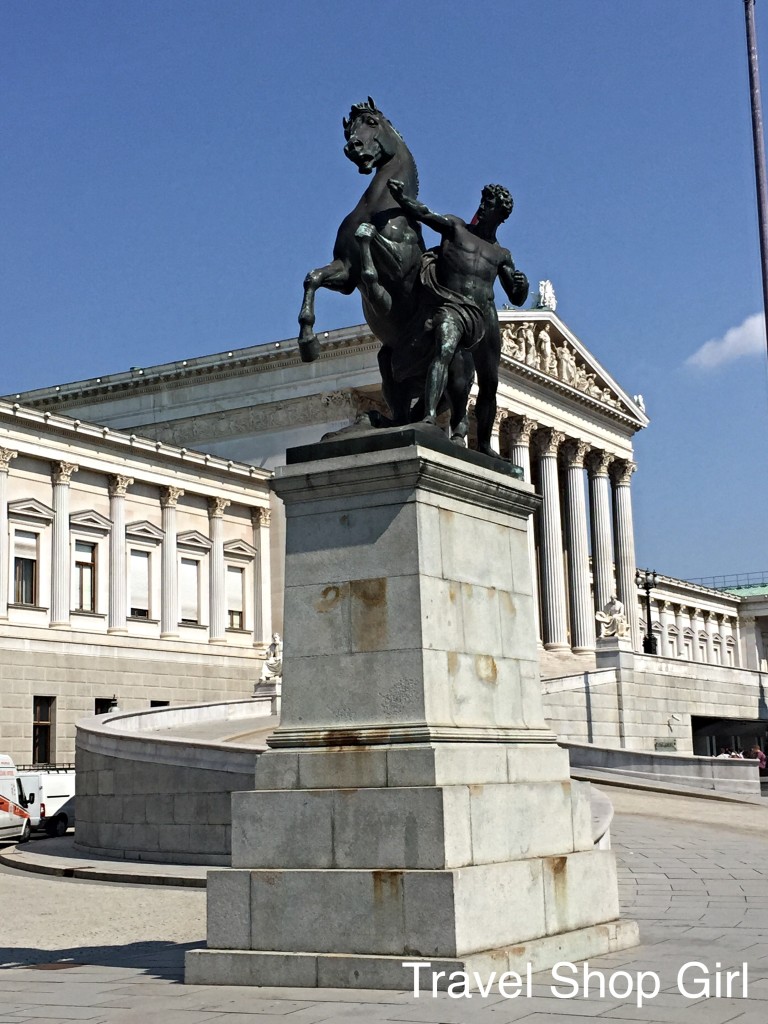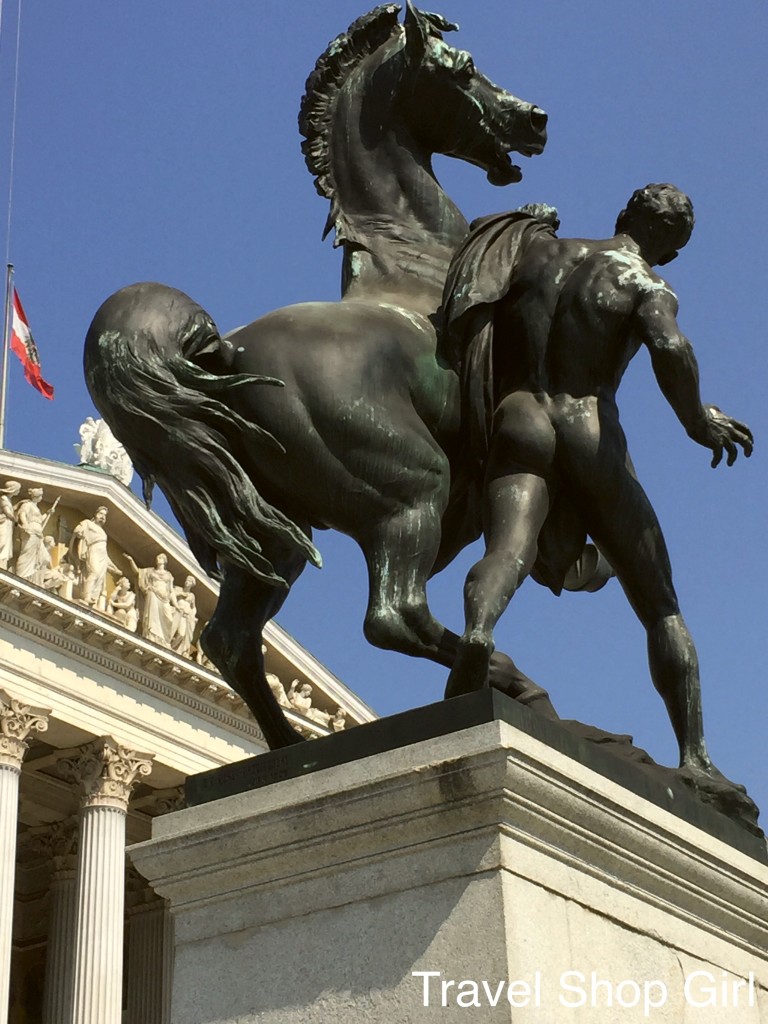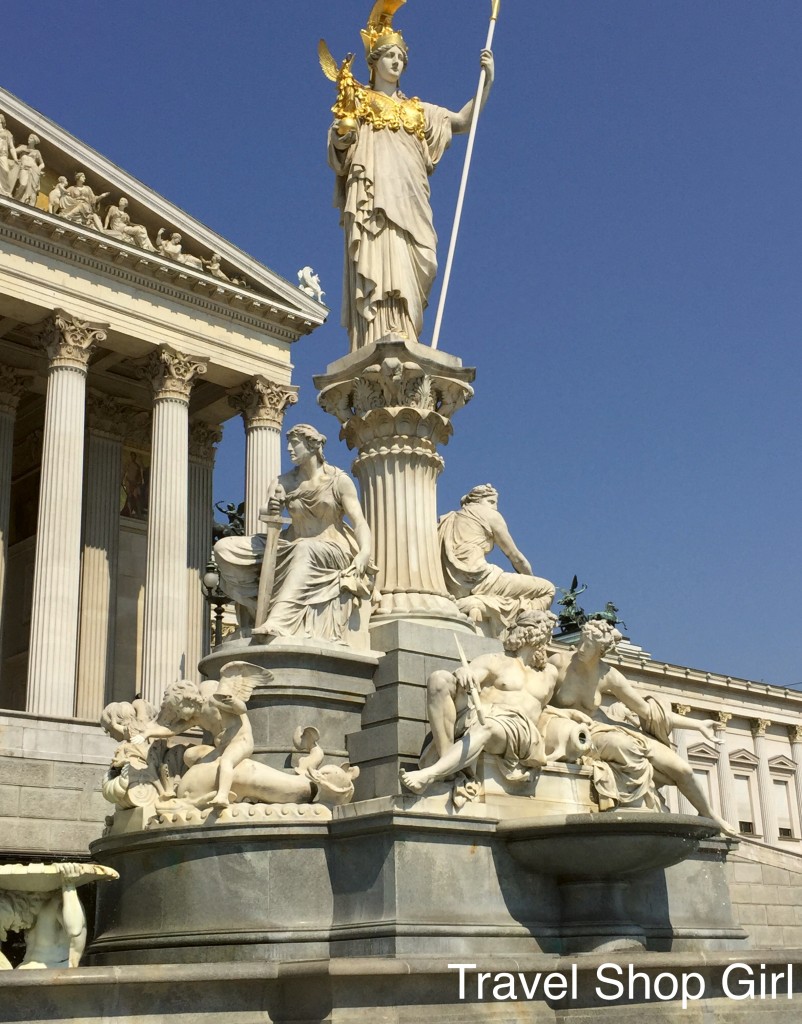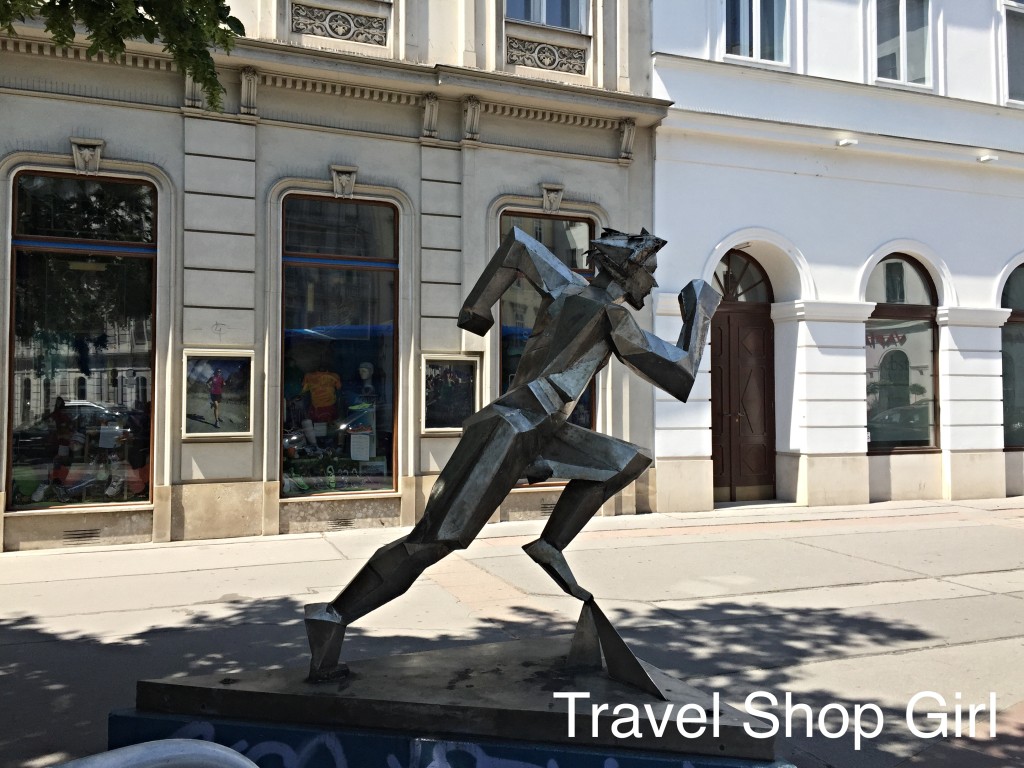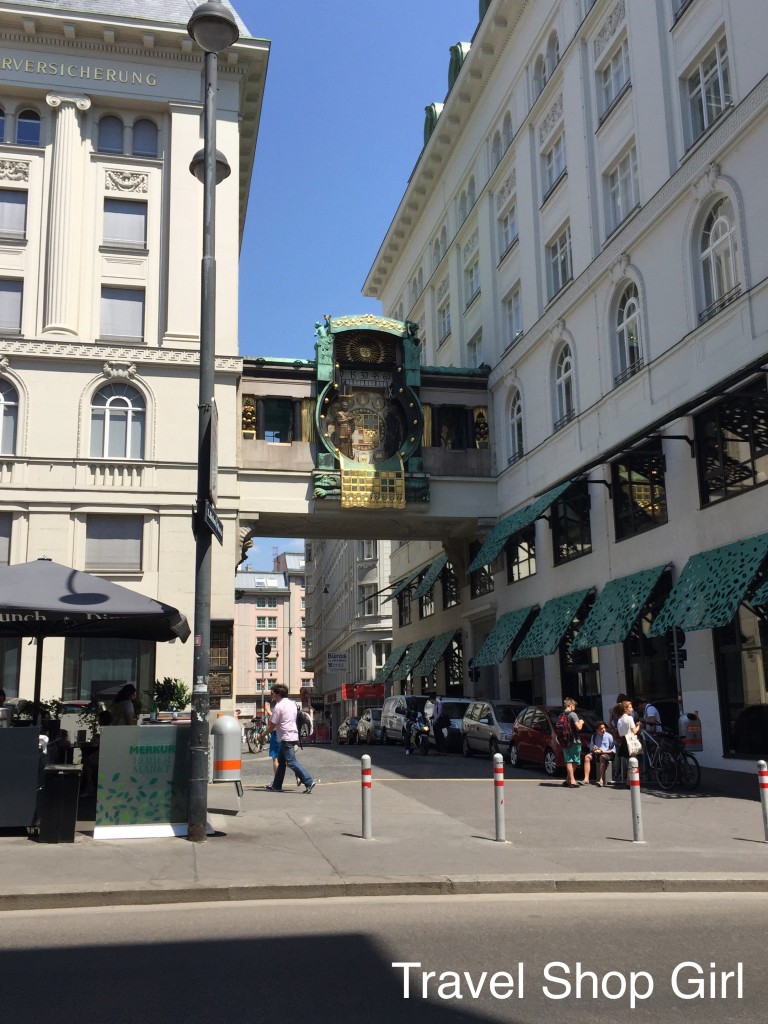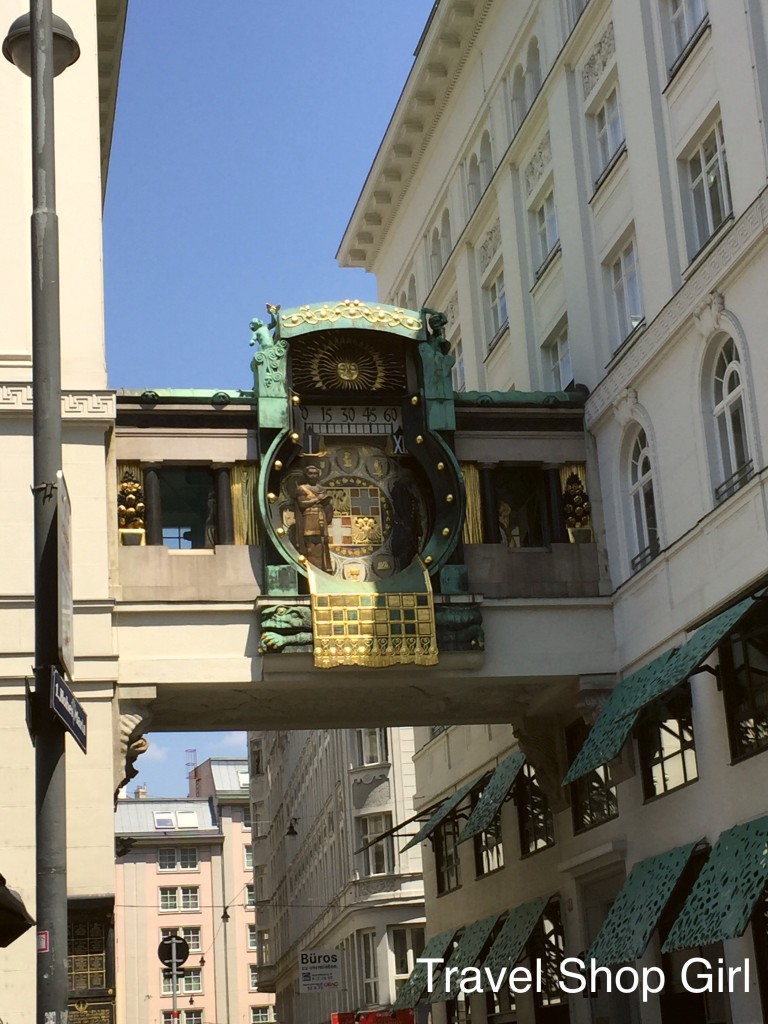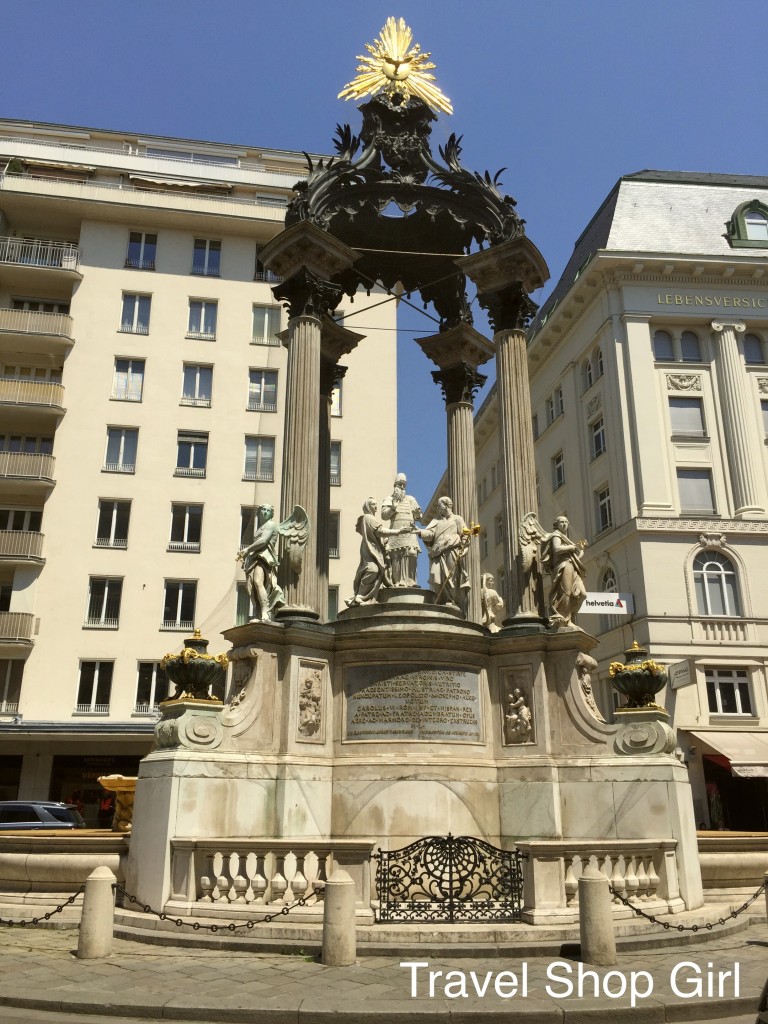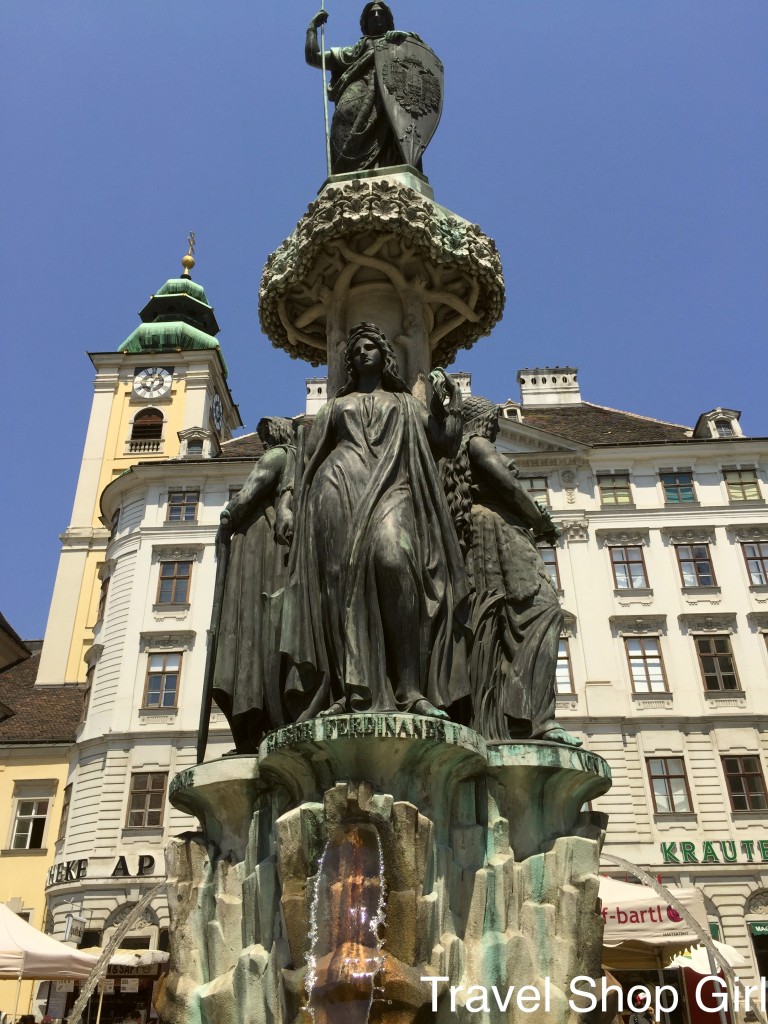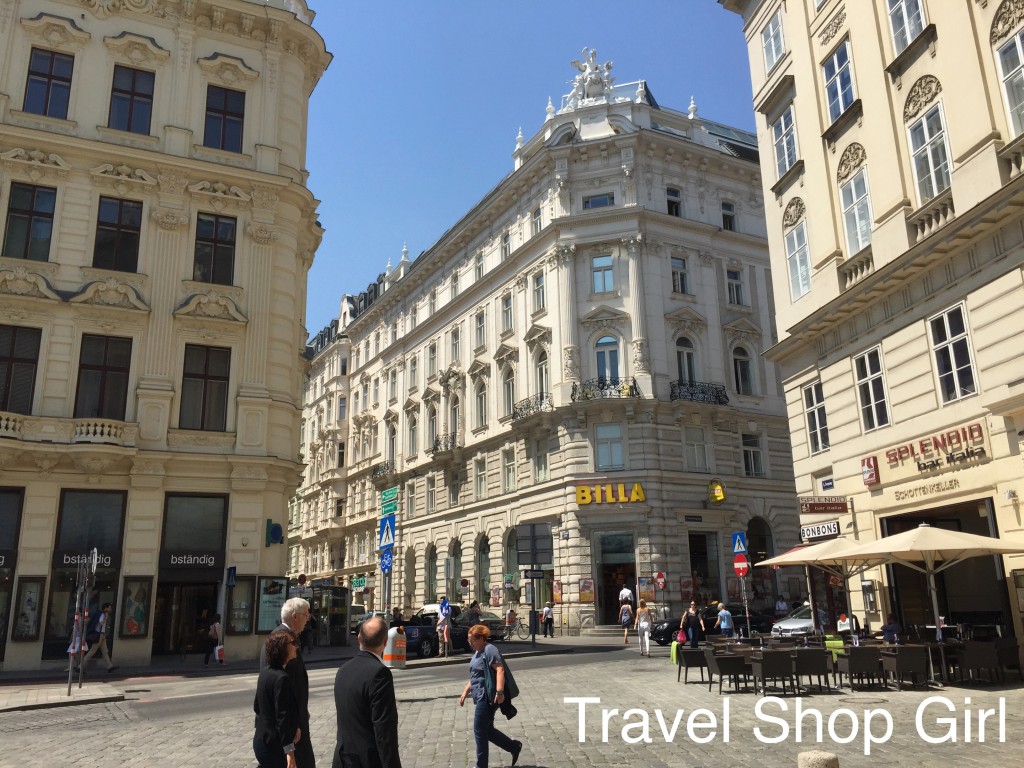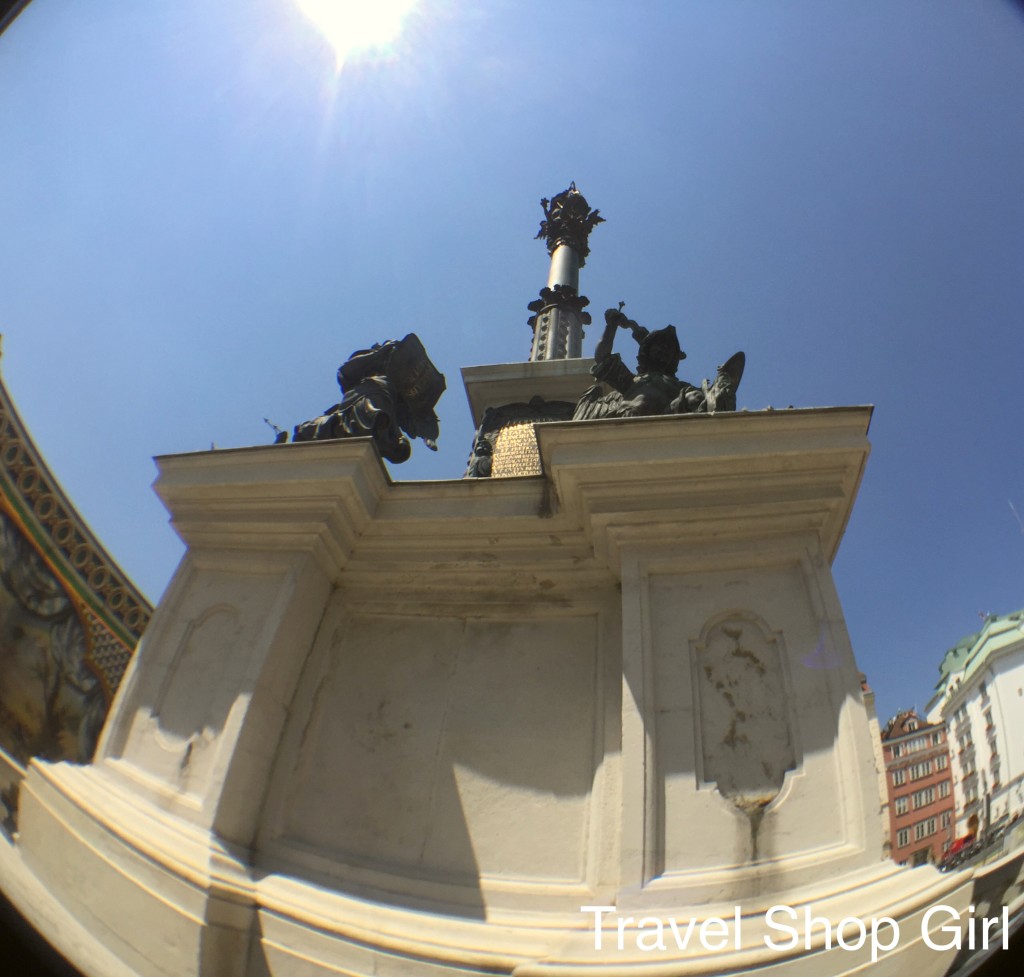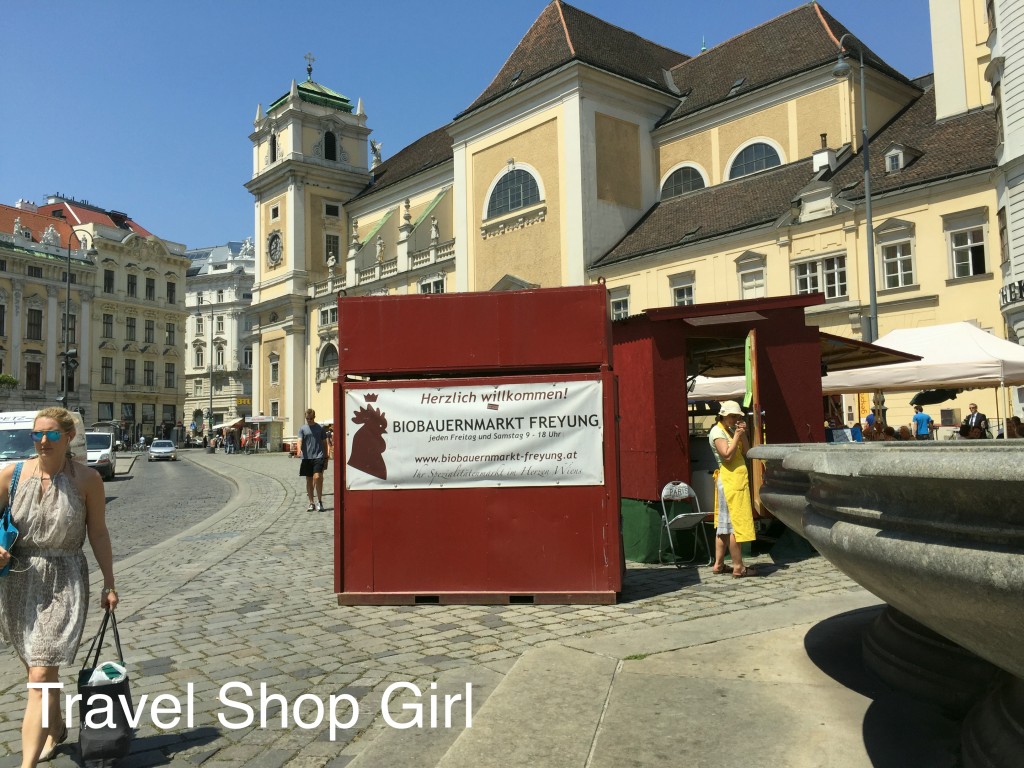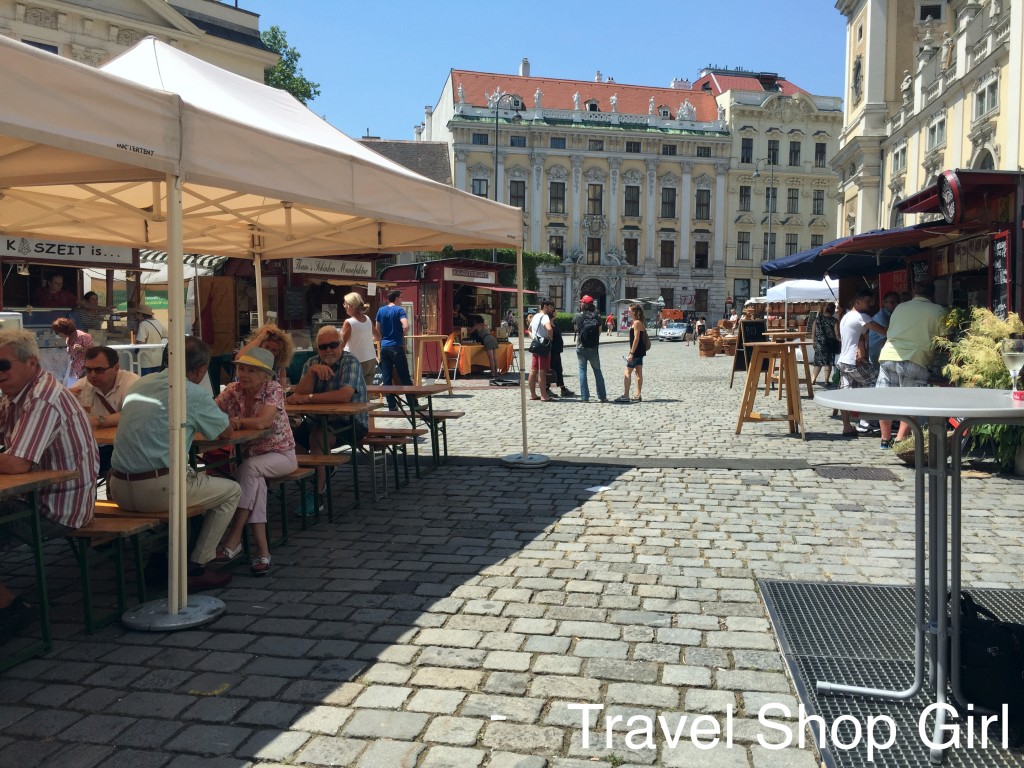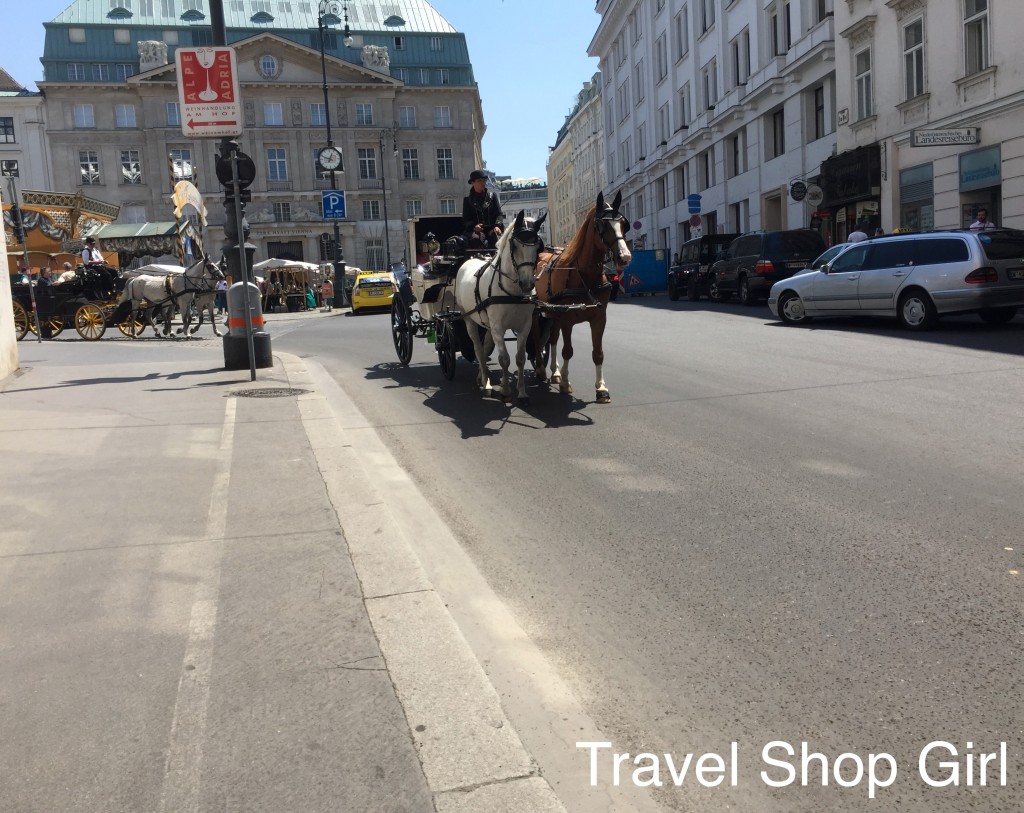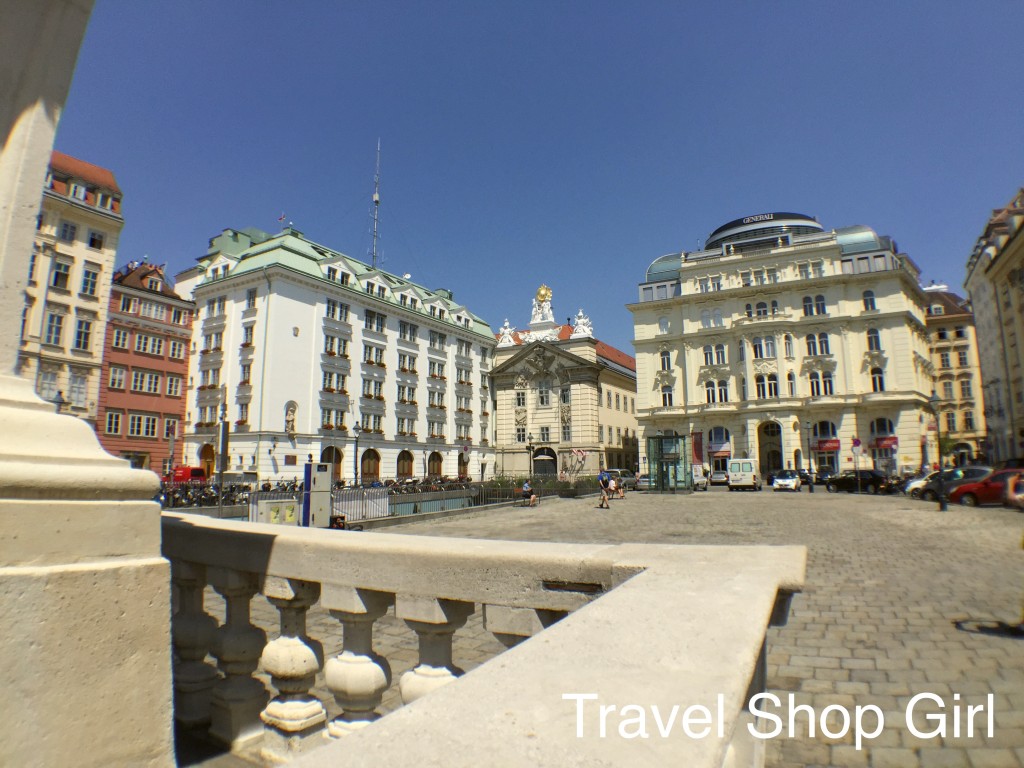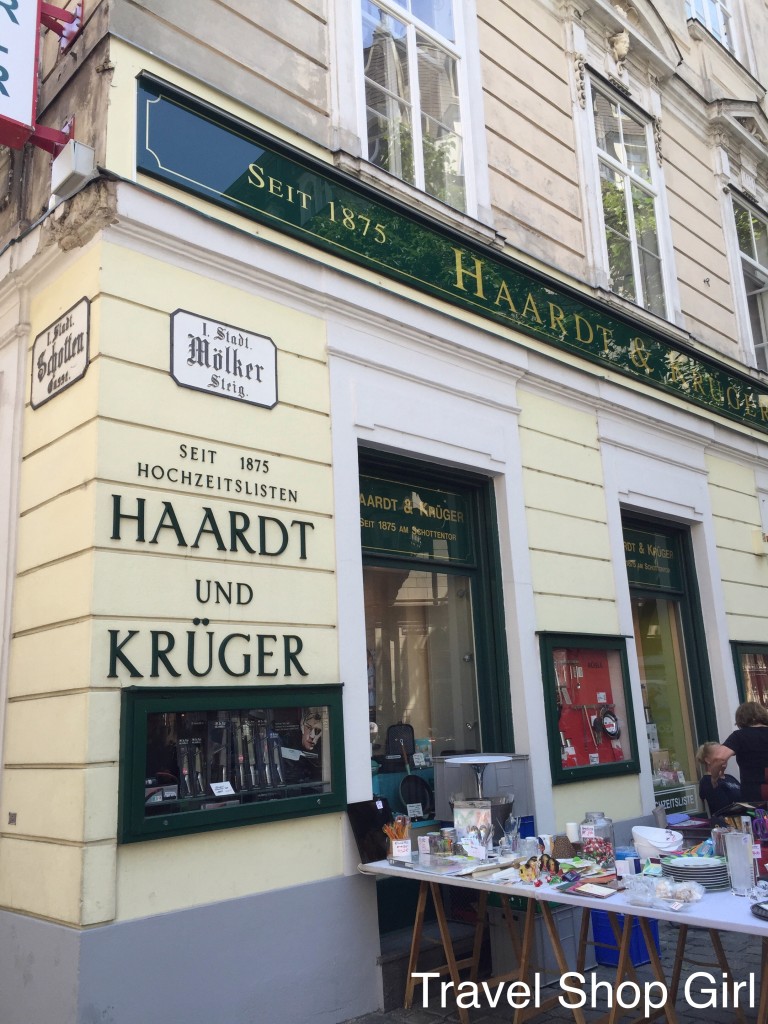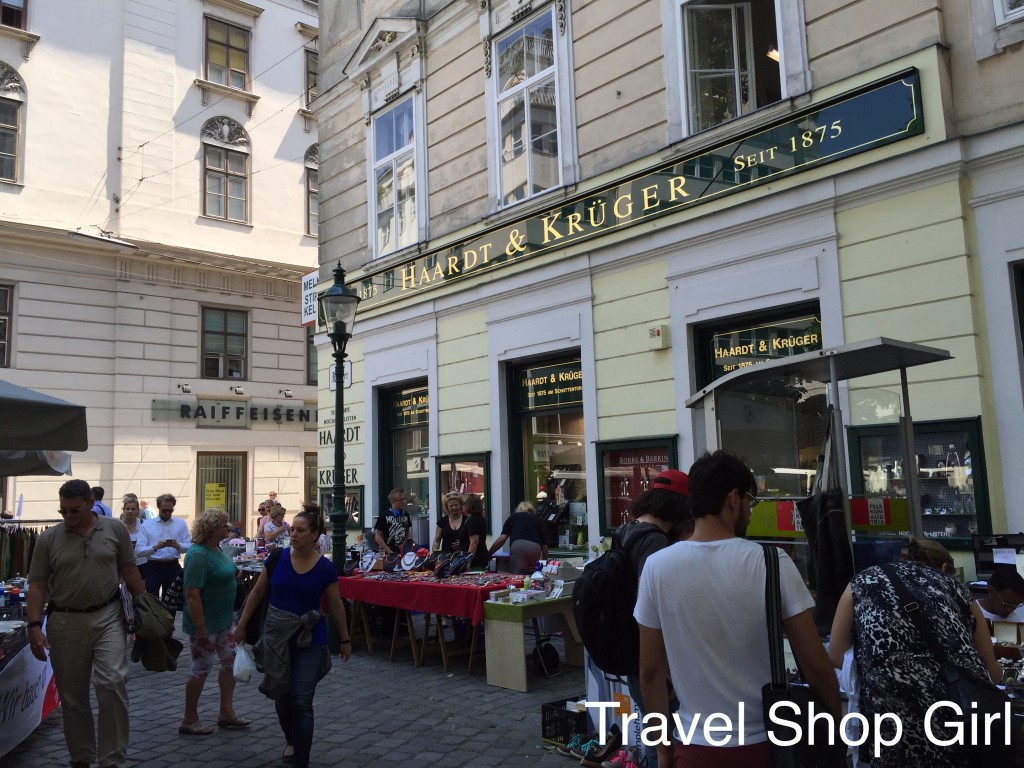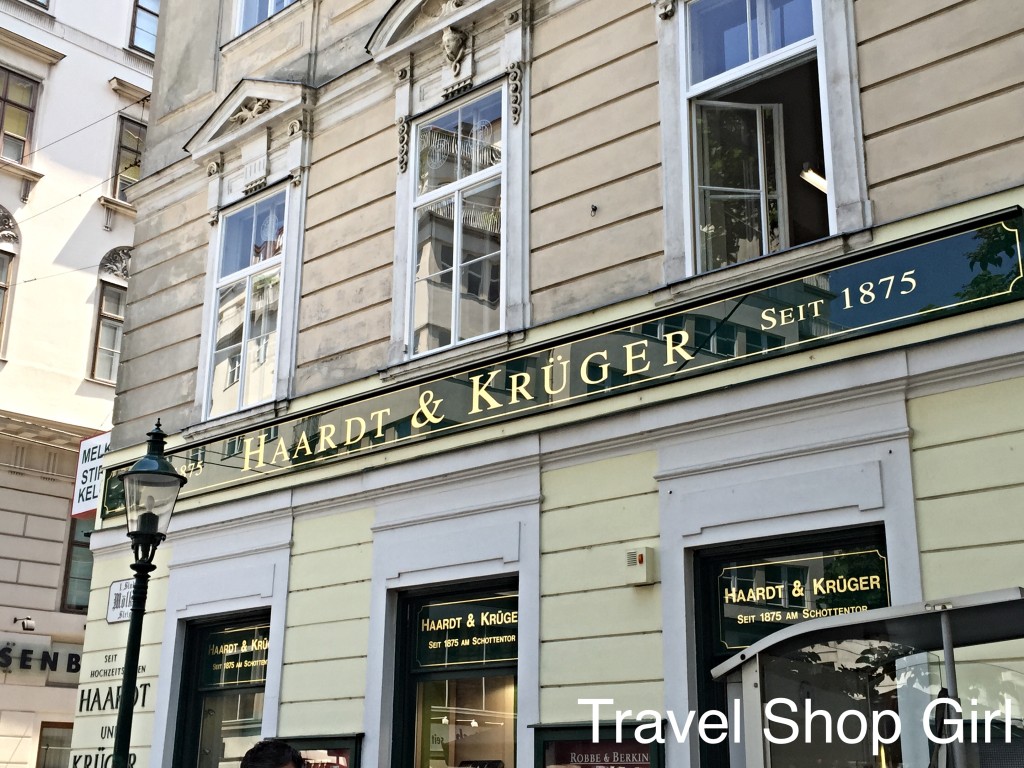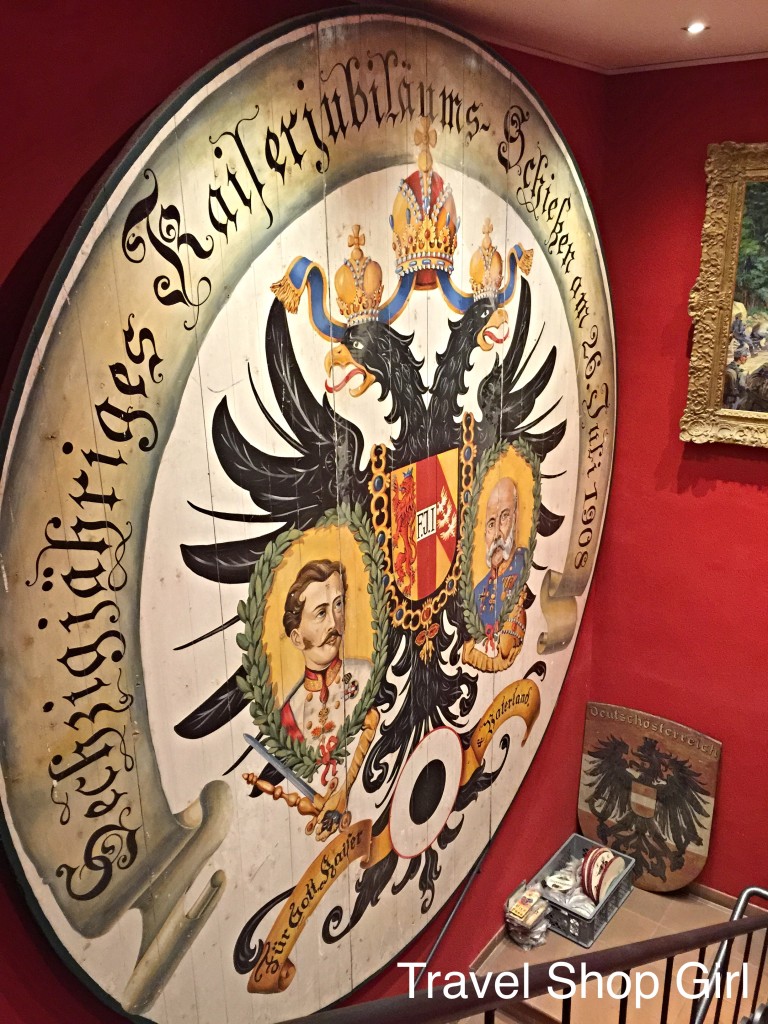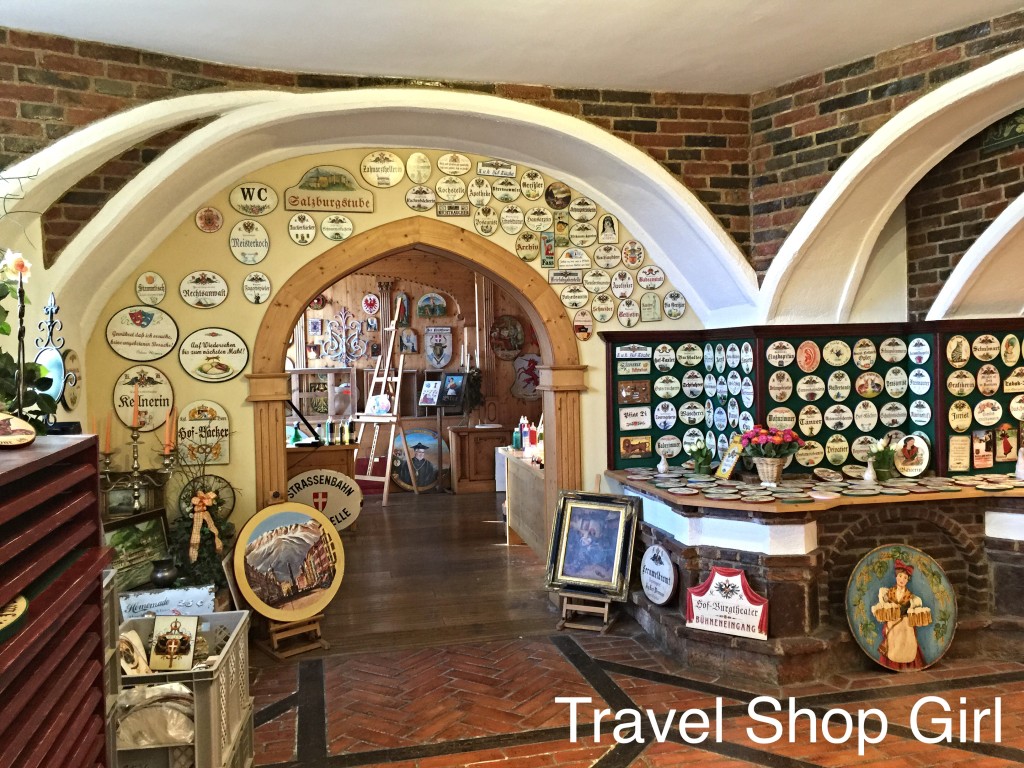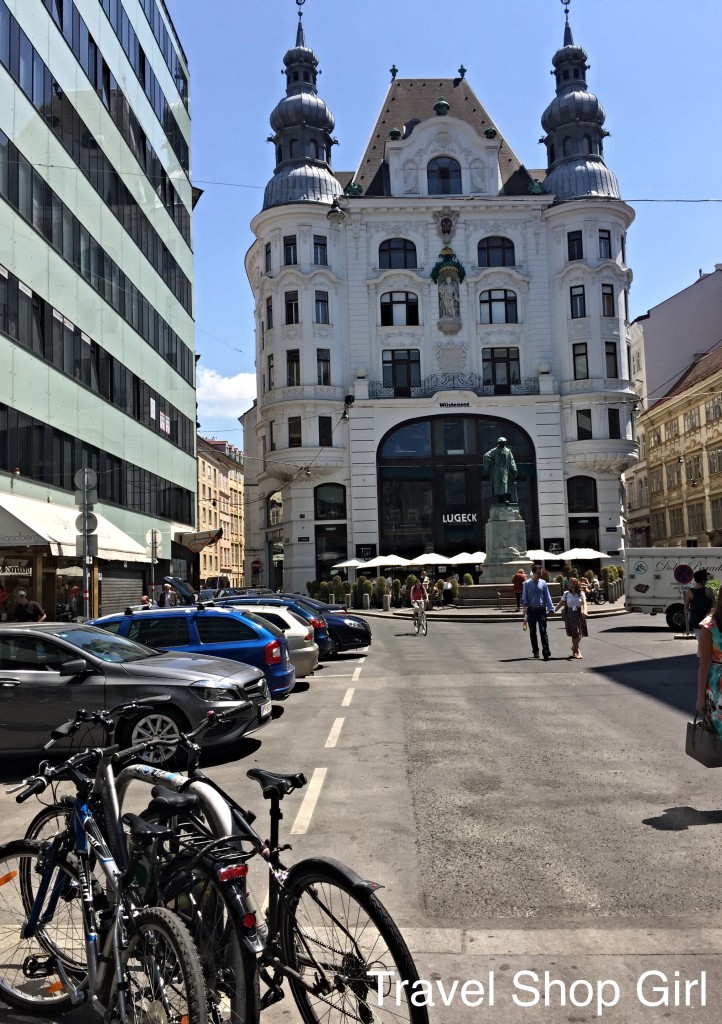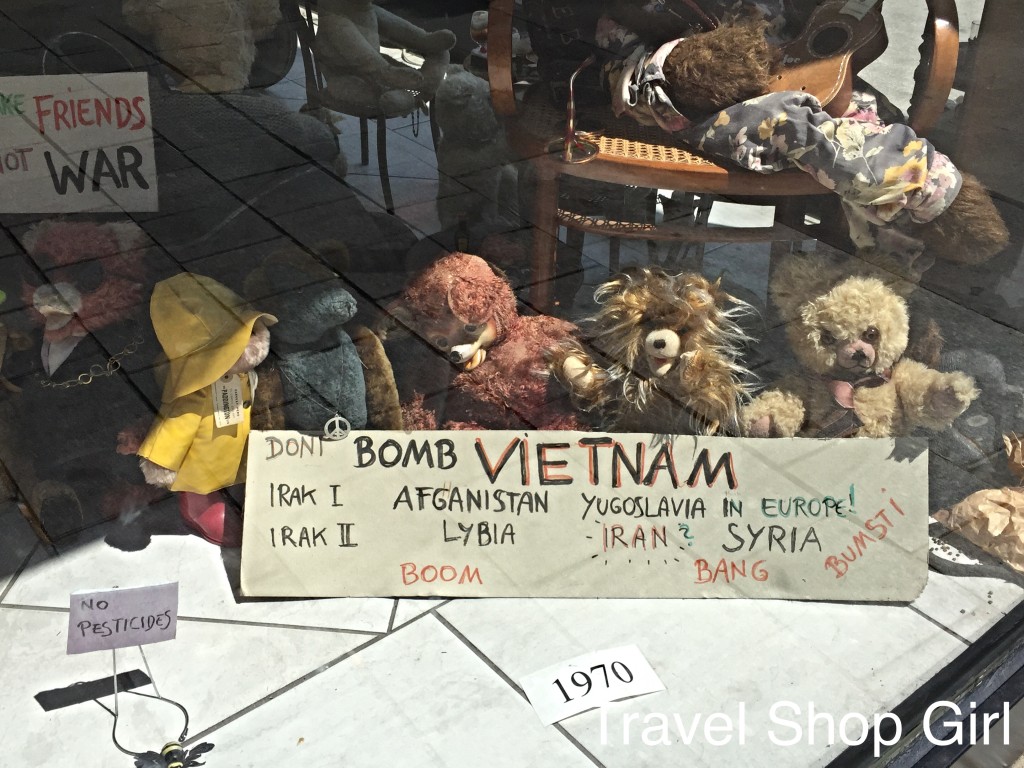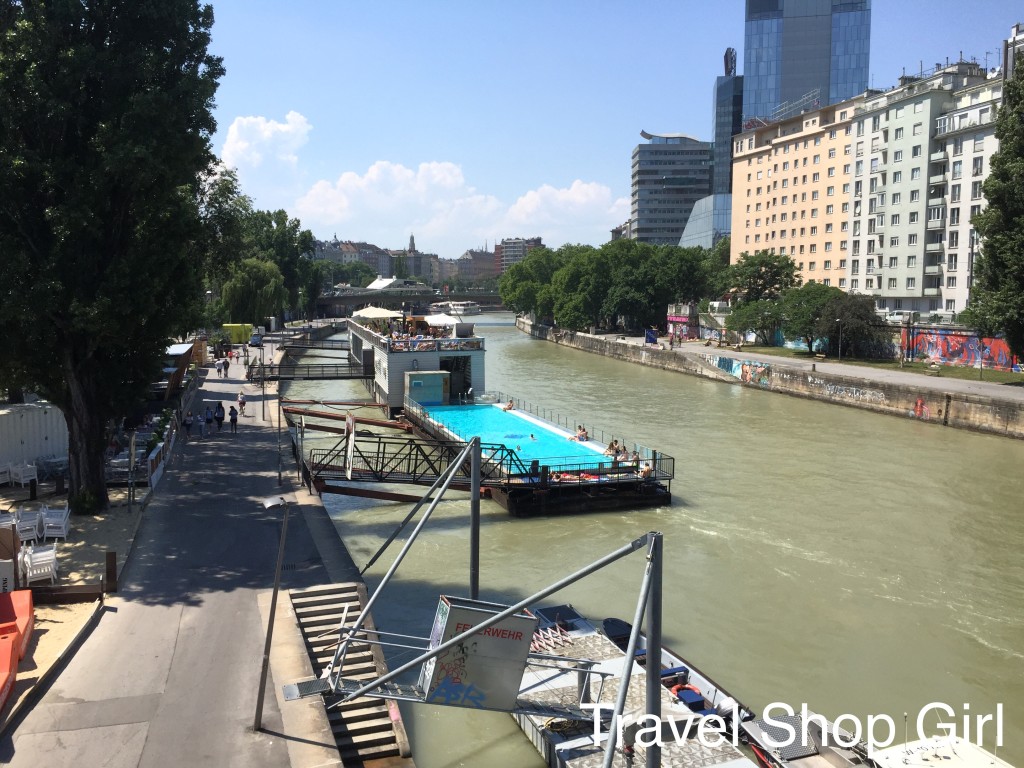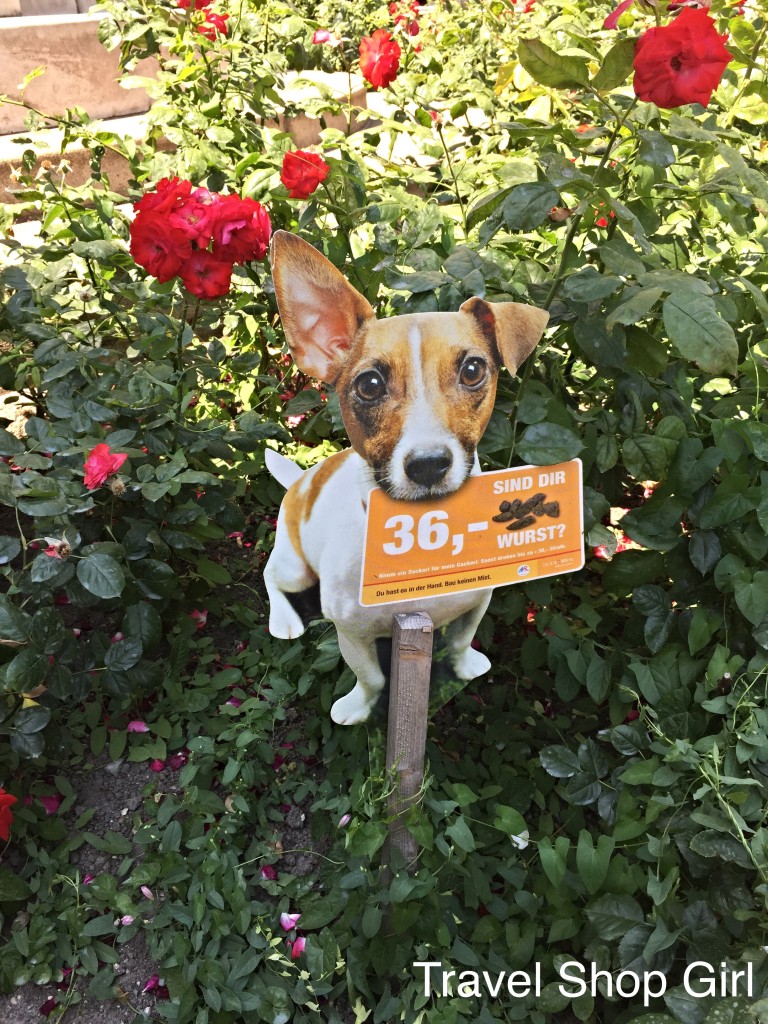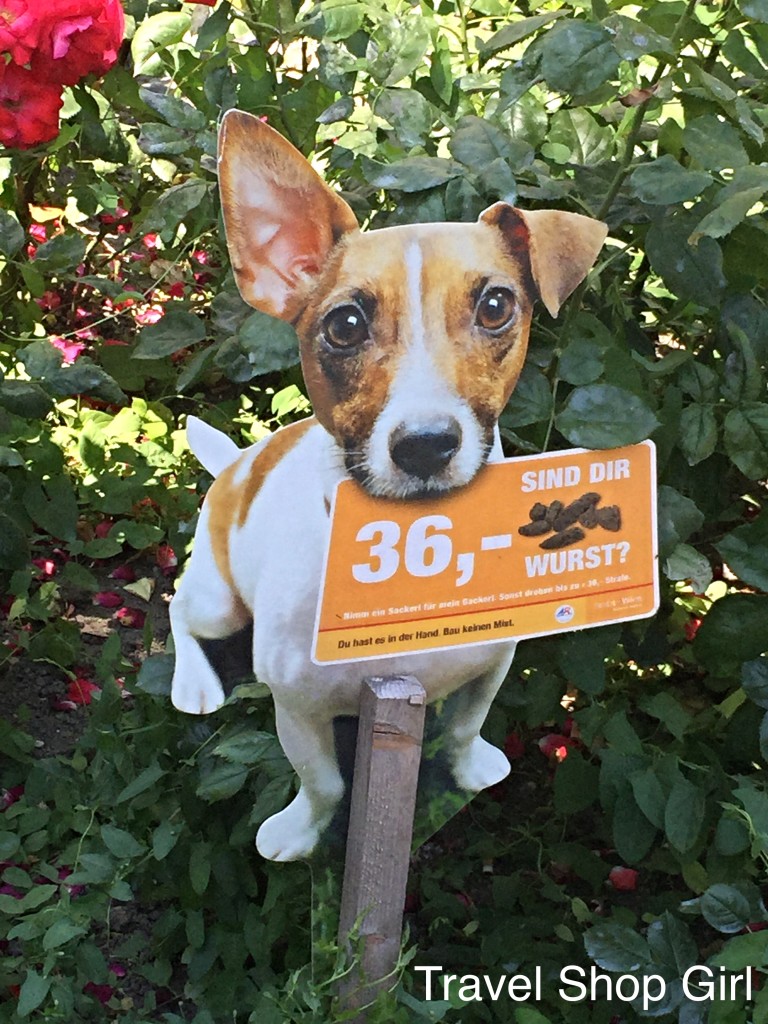
For day 6 of my Viking River Cruises “Romantic Danube” river cruise, we were going to spend another day in Austria. You know what that means – a day of sightseeing in Vienna. So much to see and do in such a short time, but come along with me to visit some of the historic sights of the city. While I didn’t get to see everything, there’s no doubt I was able to see beautiful architecture, monuments, and of course, fun stuff, too.
St. Stephen’s Cathedral: First things first as you can’t possibly arrive into Vienna without seeing the famous 446 foot tall landmark called St. Stephen’s Cathedral or Stephansdom or “Steffl” by the locals. Construction of the cathedral lasted 65 years, from 1368 to 1433 and it was built on the ruins of two earlier churches, the first a parish church consecrated in 1147. The Italian composer, Antonio Vivaldi, had his funeral held at St. Stephen’s Cathedral in 1741.
Vienna is a great architectural city as you can see from these pictures. One example is the Wiener Rathaus (Vienna City Hall). The architect of the Cologne Cathedral, Friedrich von Schmidt, designed and built this building in the neo-Gothic style between the years of 1872 and 1883. It stands at just over 321 feet high and over 30 million bricks and 40,000 cubic meters of natural stone were used in its construction.
One of the most stunning sights in Vienna to stumble upon is Parlament (Austrian Parliament Building). Much like the Rathaus, construction of Parlament took place between 1874 and 1883, so clearly lots of construction was going on in Vienna during this time. The Greek Revival style building was designed by Theophil Hansen. After an extensive amount of damage and destruction during World War II, most of the interior has been restored to its original splendour.
Although there is so much to see here, you definitely can’t miss the Pallas Athena fountain in front of the main entrance, built between 1898 to 1902 and now serves as a notable Viennese tourist attraction.
Speaking of statues, one of my favorites was Austriabrunnen (Austria Fountain) located in Freyung. The fountain was built and installed in 1846 by Munich sculptor Ludwig Schwanthaler. The statues above the basin are allegorical representations of the four main rivers of the Habsburg empire: the Elbe, Vistula, Danube and Po while the statue at the top symbolizes Austria.
Another remarkable Viennese sculpture is Vermählungsbrunnen (Wedding Fountain or Josef Fountain), which stands in Hohen Markt. The fountain was built between 1729 and 1732 for the safe return home of Emperor Leopold I’s son from the Spanish Wars of Succession. The fountain depicts the marriage of Mary and Josef with the high priest, flanked by Corinthian columns and topped with a gilded sunburst.
Interesting sights along the way included Ankeruhr (Anker Clock), a clock built by painter and sculptor Franz von Matsch between 1911 and 1914 in the typical Art Nouveau style.
From the Vienna Tourist Board: “It forms a bridge between the two parts of the Anker Insurance Company‘s building. In the course of 12 hours, twelve historical figures or pairs of figures move across the bridge. Every day at noon, all of the figures parade, each accompanied by music from its era. During the Advent season daily at 5 and 6 p.m. Christmas Carols.”
If you’re looking to do a little shopping while in Vienna, then head over to Graben, a pedestrian shopping street in the city center. You’ll find upscale stores Graben and neighboring Kohlmarkt. If you’re looking for food, then check out Demel, one of Vienna’s most famous cafés.
Nearby on Freyung we caught the Biobauernmarkt Freyung and along with food vendors where you could sit and enjoy something to eat, there was also organic food and produce of all kinds.
After walking through this area, we ended up in Judenplatz and saw the Judenplatz Holocaust Memorial also known as the Nameless Library. This striking memorial sits in the middle of the square and if you didn’t pay attention, you could possibly walk right by it and never know its importance. Designed by British artist Rachel Whiteread, it’s the central memorial for the Austrian victims of the Holocaust.
How about that? Haart und Krüger in Vienna! It’s a store that sells household appliances, glass and porcelain goods, and catering equipment. Although I didn’t go shopping here, you have to admit that it has a great name and brand.
For more shopping in Vienna, how about SBK (Schildermanufaktur Bilderwerkstatt Kunsthandwerk) where you can find hundreds or maybe even thousands of handcrafted and hand-painted signs. They have managed a way to combine the nostalgic charm of old Austrian tradition with high-quality work and attention to detail. You’ll find a variety of signs in here including signs of various occupations, common and ever so random like psychic or dog walker.
Lugeck says it is bringing back the Viennese tavern tradition and there’s no better way to do it than in the Regensburger Hof building, considered one of the most picturesque and storied buildings in Vienna. The Regensburger Hof was first erected in the 14th century and rebuilt in 1897 and today it serves as a picturesque image for photographers and tourists alike.
Nearby I spotted a collection of random, but interesting 1970 protest signs along with random stuffed animals.
Strange things I saw on the way back: How about a pool? Yup – a big old pool in the middle of the Danube Canal. Instead of going out for lunch, why not go for a swim instead? This pool is called Badeschiff or Bathing Ship and isn’t just a pool. There’s also a bowling alley, bar, pool deck, restaurant, and mini-lofts (cabanas). You could go for lunch, but you could easily spend the day or evening here as well.
Love this little doggie cardboard cutout I saw tucked in neatly amongst the greenery. Don’t think about letting your dog go here without cleaning up.

Everyone loves a ferris wheel, especially if you’re a tourist looking for great views of a new city. Vienna’s version is called Wiener Riesenrad and was erected in 1897 to celebrate the Golden Jubilee of Emperor Franz Josef I. After burning down in 1944, it was was rebuilt in 1945 and has been running ever since as a nod to the past while surviving in the present. At nearly 65 meters (212 feet) tall, you can enjoy a ride on the Giant Ferris Wheel in one of the regular or luxury cabins, where you can dine or enjoy cocktails. How I wish I had time to go on the ferris wheel!
Have you been to Vienna? Share your best memories in the comments below.




